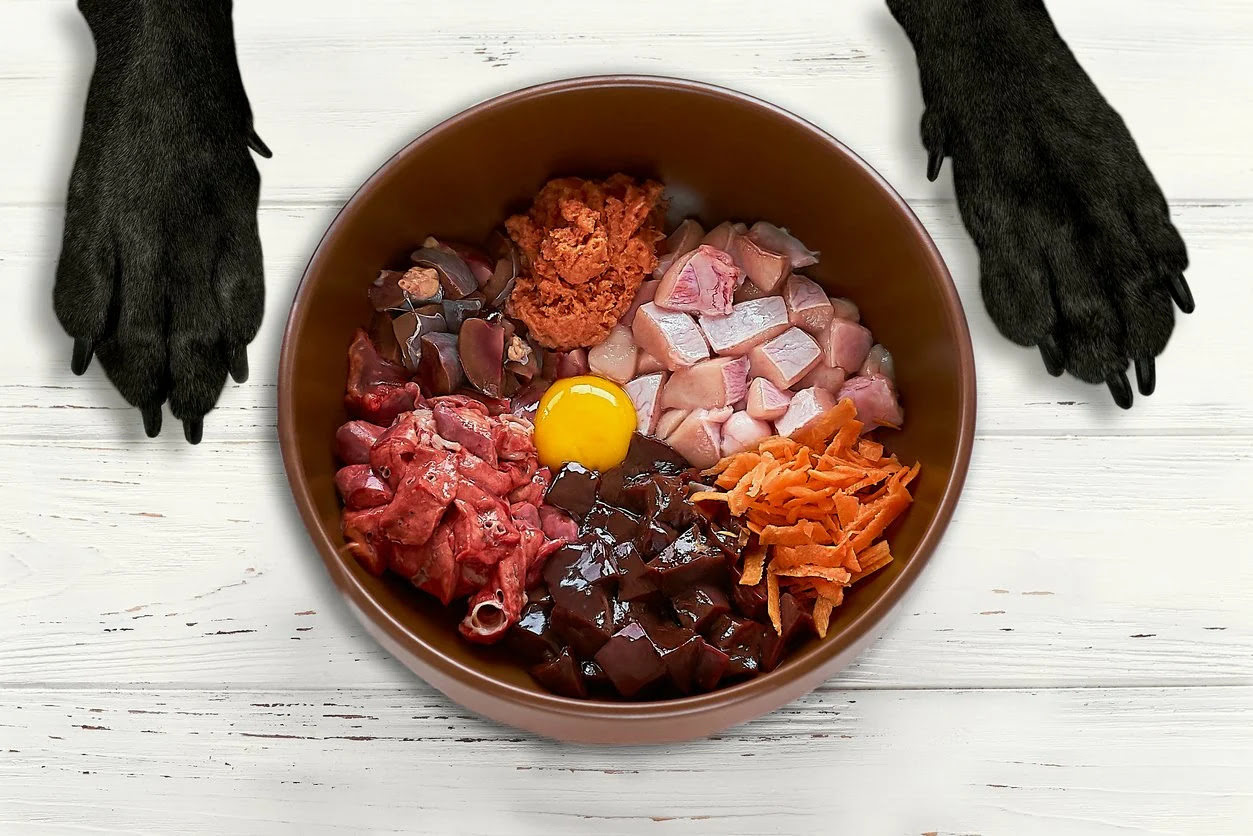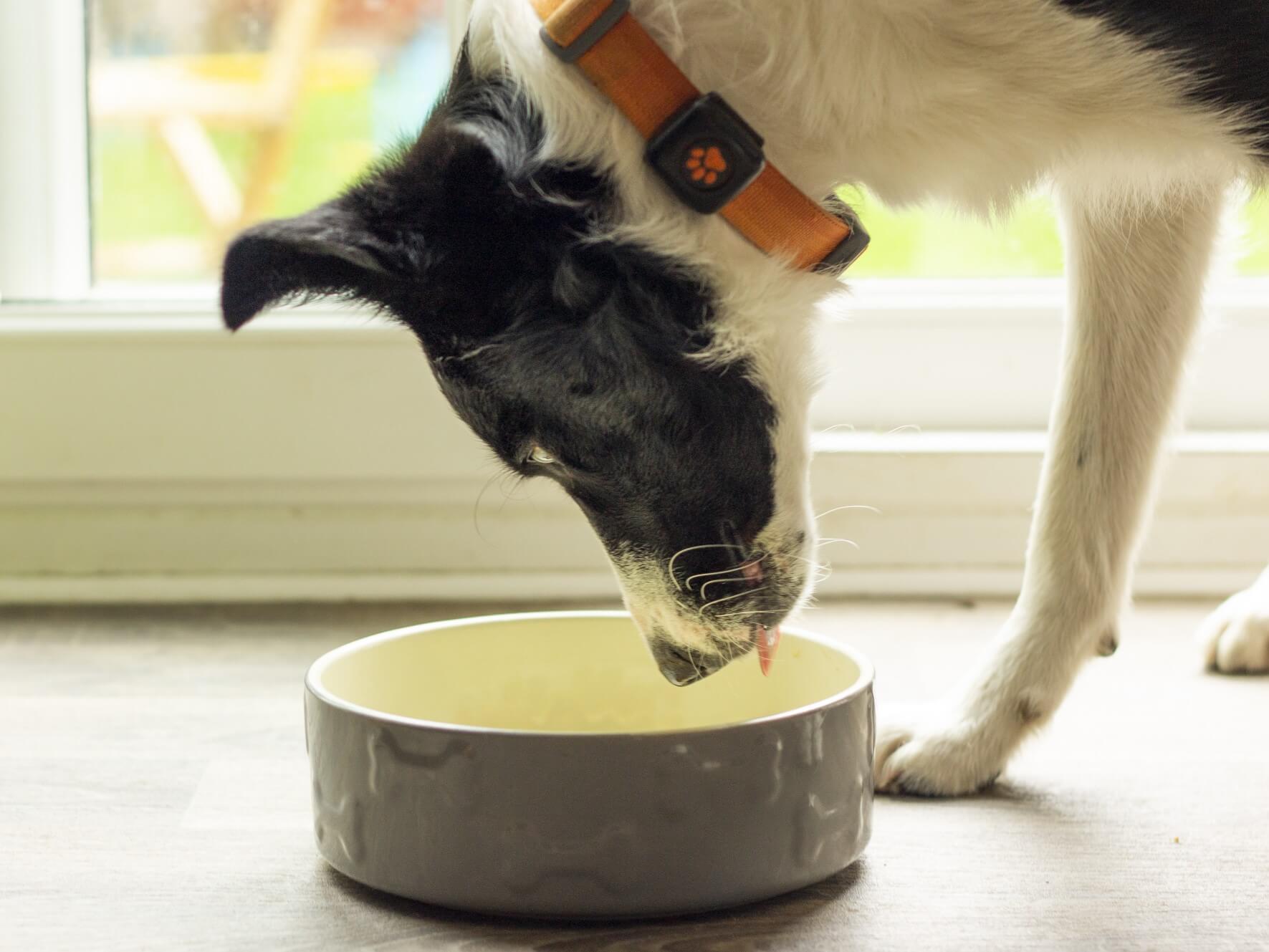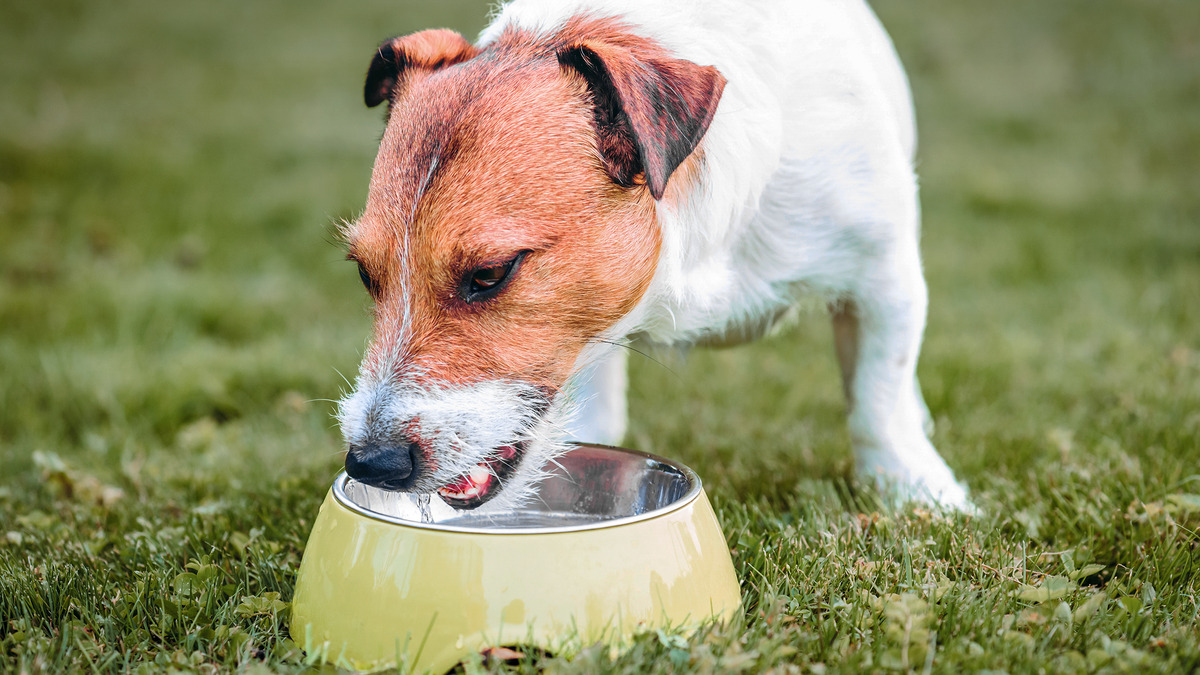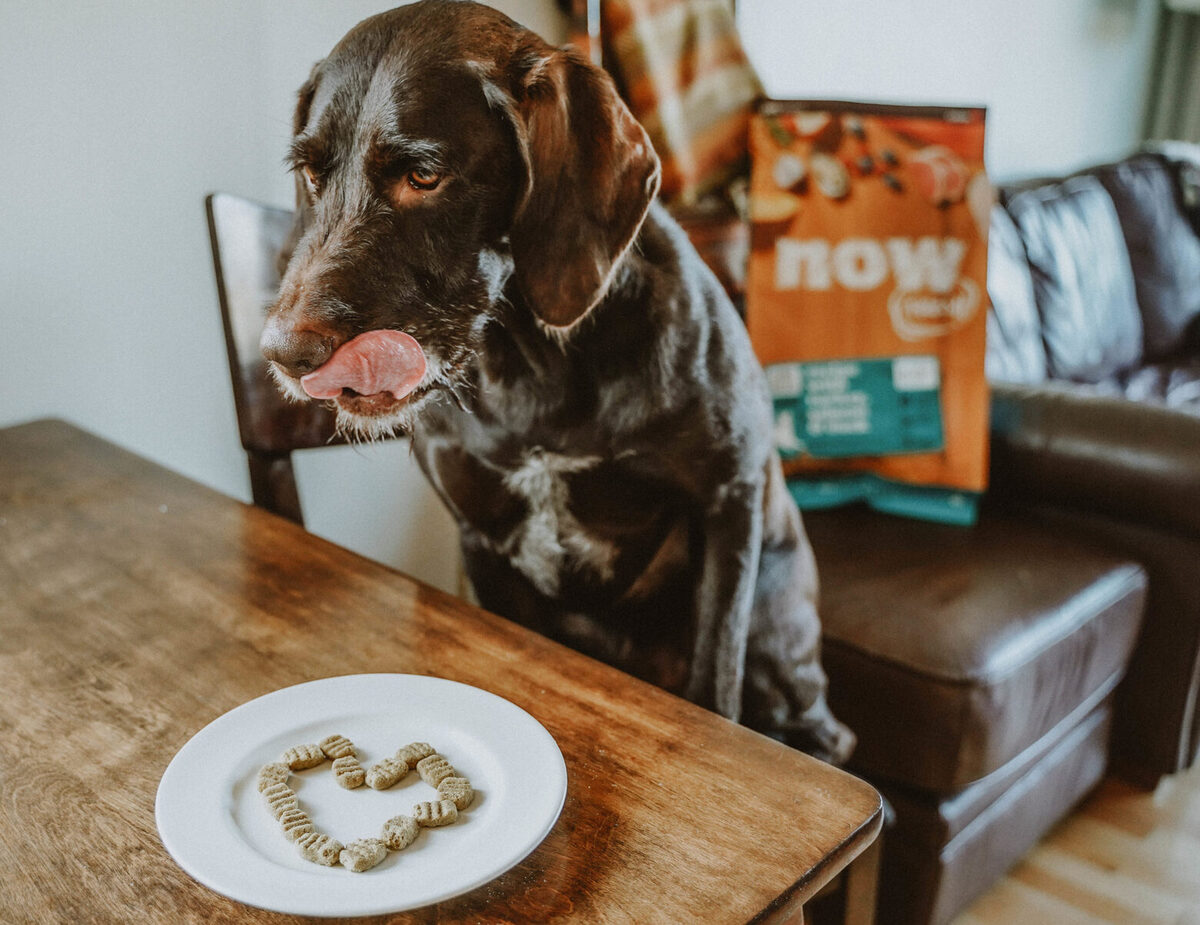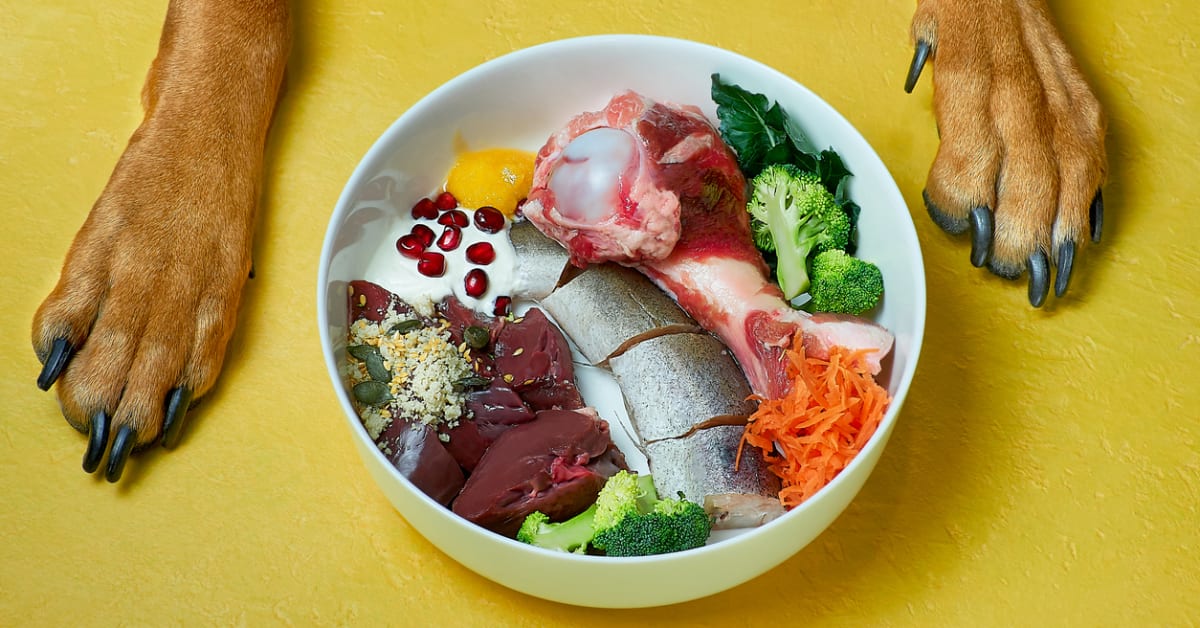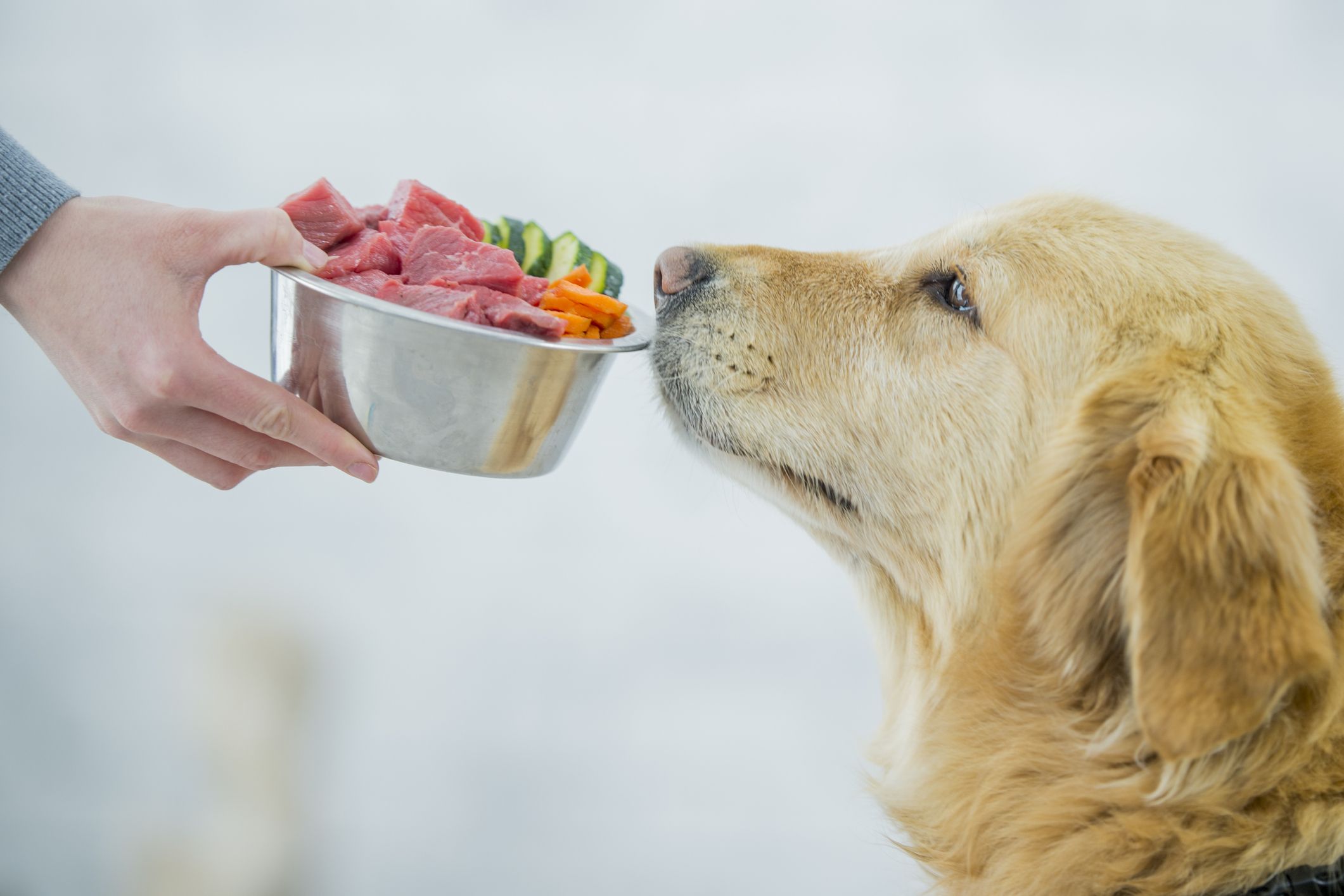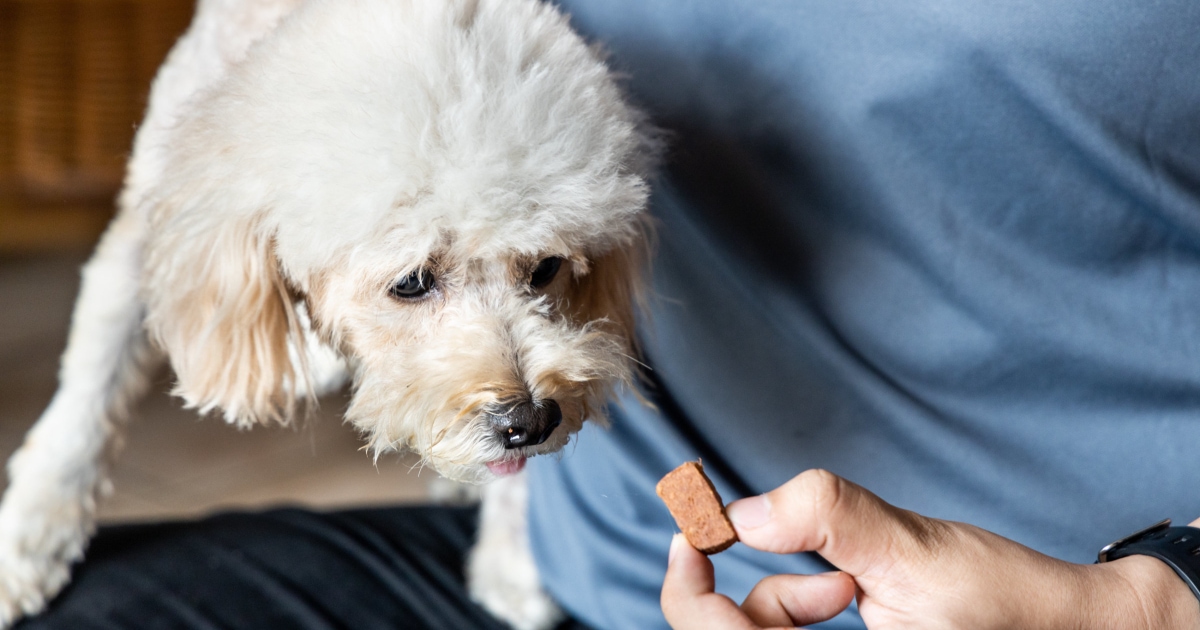Home>Health & Wellness>Nutrition & Diet>How Do I Switch My Dog To A Raw Food Diet
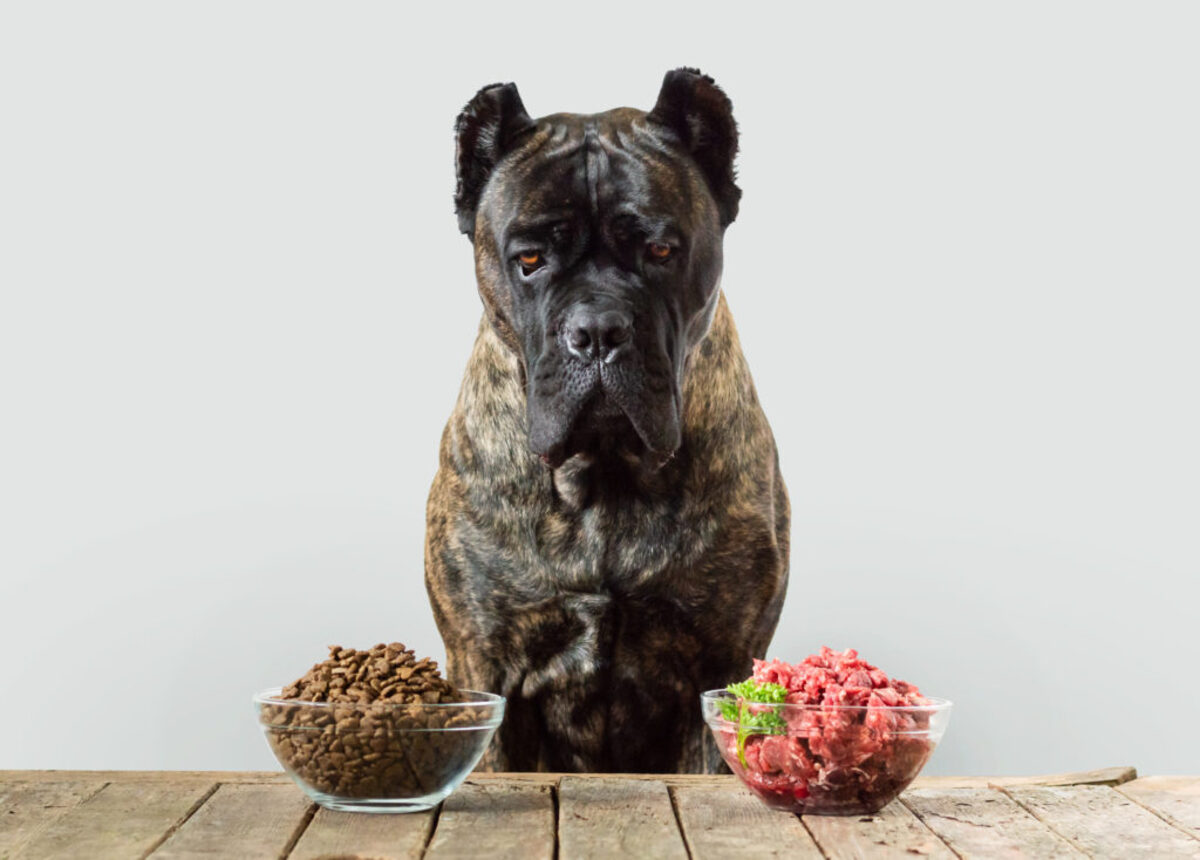

Nutrition & Diet
How Do I Switch My Dog To A Raw Food Diet
Modified: February 21, 2024
Learn how to transition your dog to a raw food diet for optimal nutrition and diet. Discover the benefits and steps to make the switch today.
(Many of the links in this article redirect to a specific reviewed product. Your purchase of these products through affiliate links helps to generate commission for Pawsomeoldies.com, at no extra cost. Learn more)
Table of Contents
- Introduction
- Understanding the Benefits of a Raw Food Diet for Dogs
- Consulting with a Veterinarian Before Making the Switch
- Gradually Introducing Raw Foods into Your Dog's Diet
- Monitoring Your Dog's Health and Well-being on a Raw Food Diet
- Potential Risks and Considerations of a Raw Food Diet for Dogs
- Conclusion
Introduction
Switching your dog to a raw food diet is a decision that can significantly impact your furry friend's health and well-being. As a responsible pet owner, it's essential to understand the implications of transitioning to a raw food diet and the potential benefits it can offer to your canine companion. This dietary shift involves providing your dog with uncooked, natural ingredients such as raw meat, bones, fruits, and vegetables, aiming to mimic the diet of their wild ancestors.
Embarking on this journey requires careful consideration and a deep understanding of your dog's nutritional needs. While the concept of a raw food diet for dogs may seem straightforward, it's crucial to delve into the details to ensure that you are making an informed decision that aligns with your dog's specific dietary requirements.
In the following sections, we will explore the various aspects of transitioning your dog to a raw food diet, including the potential benefits, the importance of consulting with a veterinarian, the gradual introduction of raw foods, and the essential monitoring of your dog's health and well-being throughout the process. Additionally, we will delve into the potential risks and considerations associated with a raw food diet for dogs, providing you with a comprehensive understanding of this dietary approach.
By gaining insight into these crucial elements, you will be better equipped to make informed decisions regarding your dog's diet, ultimately contributing to their overall health and happiness. Let's embark on this enlightening journey to uncover the intricacies of transitioning your beloved canine companion to a raw food diet.
Read more: How Do I Start Feeding My Dog A Raw Diet
Understanding the Benefits of a Raw Food Diet for Dogs
Transitioning your dog to a raw food diet can offer a myriad of potential benefits that cater to their overall health and well-being. By embracing this natural and ancestral approach to nutrition, you can provide your canine companion with a range of advantages that align with their biological needs. Here are some key benefits to consider:
-
Improved Digestive Health: A raw food diet can promote healthy digestion in dogs. The natural enzymes present in raw foods can aid in the breakdown and absorption of nutrients, potentially reducing digestive issues such as bloating, gas, and constipation.
-
Enhanced Nutrient Absorption: Raw foods are rich in essential nutrients, including vitamins, minerals, and amino acids, which are often preserved in their natural state. This can contribute to improved nutrient absorption, supporting your dog's overall health and vitality.
-
Healthy Skin and Coat: The high-quality proteins and essential fatty acids found in raw meats can contribute to a lustrous coat and healthy skin for your dog. This can help alleviate skin issues and promote a vibrant, glossy coat.
-
Potential Weight Management: A raw food diet may assist in maintaining an optimal weight for your dog. By providing a balanced and species-appropriate diet, you can help manage your dog's weight more effectively.
-
Enhanced Dental Health: Chewing on raw bones and meat can help keep your dog's teeth clean and healthy. This natural dental care approach may reduce the risk of dental problems such as tartar and plaque buildup.
-
Increased Energy and Vitality: Many dog owners report observing increased energy levels and vitality in their pets after transitioning to a raw food diet. This enhanced vitality can contribute to a more active and joyful lifestyle for your furry friend.
-
Potential Allergy Management: Some dogs with food sensitivities or allergies may benefit from a raw food diet, as it eliminates common allergens found in commercial pet foods, such as grains and artificial additives.
Understanding these potential benefits can provide valuable insight into the positive impact that a raw food diet can have on your dog's overall health. It's important to note that while these benefits are compelling, each dog is unique, and individual responses to dietary changes may vary. Therefore, it's essential to monitor your dog's progress and consult with a veterinarian to ensure that the raw food diet aligns with their specific nutritional needs.
Consulting with a Veterinarian Before Making the Switch
Before embarking on the journey of transitioning your dog to a raw food diet, it is imperative to seek professional guidance from a qualified veterinarian. Consulting with a veterinarian serves as a crucial step in ensuring that the dietary shift aligns with your dog's specific nutritional requirements and overall well-being.
Veterinarians possess the expertise and knowledge to assess your dog's individual health status, dietary needs, and any pre-existing medical conditions that may impact their dietary choices. By engaging in a thorough discussion with a veterinarian, you can gain valuable insights tailored to your dog's unique circumstances, thereby making informed decisions regarding their diet.
During the consultation, the veterinarian can provide personalized recommendations based on factors such as your dog's age, breed, activity level, and any existing health concerns. This individualized approach is essential in determining the suitability of a raw food diet for your dog and addressing any potential nutritional gaps or excesses that may arise from the dietary transition.
Furthermore, veterinarians can offer guidance on sourcing high-quality raw ingredients, ensuring that the raw food diet meets essential nutritional standards and minimizes potential health risks. They can advise on the selection of appropriate protein sources, the inclusion of essential vitamins and minerals, and the safe handling of raw foods to mitigate the risk of foodborne illnesses.
In addition to nutritional considerations, veterinarians can assess your dog's overall health and identify any underlying health issues that may impact their dietary transition. This comprehensive evaluation can help mitigate potential risks and ensure that the raw food diet supports your dog's long-term health and vitality.
Moreover, the veterinarian can provide insights into potential behavioral changes, digestive adjustments, and monitoring protocols to facilitate a smooth transition to a raw food diet. Their expertise can help you anticipate and address any challenges that may arise during the adjustment period, fostering a seamless and positive experience for your dog.
Ultimately, consulting with a veterinarian before making the switch to a raw food diet demonstrates a commitment to your dog's well-being and health. By leveraging the expertise of a veterinary professional, you can navigate the complexities of dietary changes with confidence, knowing that you are prioritizing your dog's nutritional needs and overall welfare.
Gradually Introducing Raw Foods into Your Dog's Diet
Transitioning your dog to a raw food diet requires a thoughtful and gradual approach to ensure a smooth adjustment and minimize potential digestive disturbances. By introducing raw foods gradually, you can allow your dog's digestive system to adapt to the new diet while monitoring their response and making necessary adjustments along the way.
Phase 1: Introduction of Small Portions
Begin the transition by incorporating small portions of raw food into your dog's existing diet. This initial phase aims to acclimate your dog to the new food while minimizing any abrupt changes that could lead to digestive upset. Start by replacing a small portion of your dog's regular food with an equivalent amount of raw food, such as raw meat or a small piece of raw bone. Monitor your dog's response closely during this phase, observing their appetite, stool consistency, and overall well-being.
Phase 2: Gradual Increase in Raw Food Proportion
As your dog becomes accustomed to the presence of raw food in their diet, gradually increase the proportion of raw food while reducing the amount of their previous diet. This incremental adjustment allows your dog's digestive system to adapt to the new food gradually. Over the course of several days or weeks, depending on your dog's individual response, aim to achieve a balanced ratio of raw food to their previous diet. This stepwise approach minimizes the likelihood of digestive disturbances and facilitates a smoother transition.
Phase 3: Complete Transition to Raw Food
Once your dog has successfully adjusted to a higher proportion of raw food in their diet, complete the transition by exclusively feeding them a balanced raw food diet. At this stage, your dog should have adapted to the new diet, and any digestive adjustments should have stabilized. It's essential to continue monitoring your dog's health and well-being during this phase, ensuring that they maintain a healthy appetite, consistent stool quality, and overall vitality.
Throughout the transition process, observe your dog's response to the new diet closely. Look for signs of digestive discomfort, changes in energy levels, coat condition, and overall demeanor. By maintaining a vigilant approach and making gradual adjustments as needed, you can support your dog's transition to a raw food diet in a manner that prioritizes their well-being and comfort.
By following this gradual introduction approach, you can facilitate a seamless transition to a raw food diet for your dog, allowing them to reap the potential benefits of this natural and ancestral dietary approach while minimizing the likelihood of digestive disturbances or discomfort.
Monitoring Your Dog's Health and Well-being on a Raw Food Diet
Ensuring the ongoing health and well-being of your dog is paramount when transitioning to a raw food diet. Monitoring your dog's response to the new diet is essential to identify any potential adjustments needed and to maintain their overall vitality. Here are key aspects to consider when monitoring your dog's health and well-being on a raw food diet:
Dietary Adherence and Appetite
Monitor your dog's adherence to the raw food diet and their appetite. A healthy transition is characterized by consistent and enthusiastic consumption of the raw food. Any significant changes in appetite or reluctance to consume the new diet should be noted and discussed with your veterinarian.
Stool Quality and Digestive Health
Observe your dog's stool quality and digestive health. A successful transition is reflected in well-formed, regular stools. Any signs of diarrhea, constipation, or irregular bowel movements should be carefully monitored and addressed promptly.
Energy Levels and Vitality
Assess your dog's energy levels and overall vitality. A positive transition to a raw food diet may result in increased energy, improved alertness, and a generally vibrant demeanor. Conversely, any notable changes in energy levels or signs of lethargy should be noted and evaluated.
Coat Condition and Skin Health
Observe your dog's coat condition and skin health. A well-balanced raw food diet can contribute to a lustrous coat and healthy skin. Any indications of skin irritations, dull coat, or excessive shedding should be monitored and discussed with your veterinarian.
Weight Management
Monitor your dog's weight and body condition throughout the transition. A successful shift to a raw food diet should support optimal weight management. Any unexplained weight loss or gain should be carefully tracked and addressed in consultation with your veterinarian.
Behavioral Changes and Overall Well-being
Pay attention to any behavioral changes and your dog's overall well-being. A positive transition should be accompanied by a content and happy disposition. Any unusual behaviors or signs of distress should be observed and communicated to your veterinarian for further assessment.
By vigilantly monitoring these aspects of your dog's health and well-being, you can proactively address any concerns and ensure a smooth and successful transition to a raw food diet. Regular communication with your veterinarian is crucial, as they can provide tailored guidance and support based on your dog's individual response to the dietary changes. This attentive approach empowers you to prioritize your dog's health and well-being as they embrace a natural and nourishing raw food diet.
Potential Risks and Considerations of a Raw Food Diet for Dogs
While the raw food diet for dogs offers compelling benefits, it is essential to acknowledge and carefully consider the potential risks and considerations associated with this dietary approach. Understanding these aspects is crucial in making informed decisions and ensuring the well-being of your canine companion.
Bacterial Contamination and Food Safety
One of the primary concerns with a raw food diet is the risk of bacterial contamination. Raw meat, bones, and other uncooked ingredients can harbor harmful bacteria such as Salmonella, E. coli, and Listeria. These pathogens pose a potential health hazard to both dogs and their human caregivers. Proper handling, storage, and hygiene practices are essential to mitigate the risk of foodborne illnesses associated with raw food diets.
Nutritional Imbalance and Deficiencies
Crafting a balanced raw food diet that meets all of a dog's nutritional requirements can be challenging. Without careful planning and supplementation, dogs may be at risk of nutrient deficiencies, particularly in essential vitamins and minerals. Calcium-phosphorus balance, omega-3 fatty acids, and other vital nutrients must be carefully considered to prevent potential health issues stemming from nutritional imbalances.
Potential Choking and Gastrointestinal Obstruction
Feeding raw bones as part of a dog's diet carries the risk of choking, dental fractures, or gastrointestinal obstruction. While raw bones can provide dental benefits and mental stimulation, they must be appropriately sized and supervised to minimize these risks. Additionally, certain types of bones, such as weight-bearing bones, can pose a higher risk of dental or digestive complications.
Zoonotic Disease Transmission
Zoonotic diseases are those that can be transmitted between animals and humans. Handling raw meat and other ingredients in a dog's diet increases the risk of zoonotic disease transmission, potentially impacting the health of both dogs and their human caregivers. Practicing proper food safety measures and personal hygiene is crucial in reducing this risk.
Veterinary Oversight and Monitoring
Transitioning to a raw food diet necessitates ongoing veterinary oversight and monitoring. Regular health assessments, nutritional evaluations, and discussions with a veterinarian are essential to ensure that the diet aligns with a dog's specific needs and to address any emerging health concerns promptly.
Consideration for Individual Health and Lifestyle Factors
Each dog is unique, and factors such as age, breed, existing health conditions, and lifestyle must be carefully considered when evaluating the suitability of a raw food diet. Dogs with compromised immune systems, puppies, senior dogs, or those with specific health issues may require tailored dietary considerations and closer monitoring.
By acknowledging these potential risks and considerations, pet owners can approach the transition to a raw food diet with a comprehensive understanding of the challenges and responsibilities involved. Engaging in open communication with a veterinarian and implementing diligent food safety practices are essential in mitigating these risks and fostering a safe and beneficial dietary experience for dogs embracing a raw food diet.
Conclusion
In conclusion, the decision to switch your dog to a raw food diet is a significant undertaking that warrants careful consideration and a deep understanding of the potential benefits, risks, and responsibilities involved. The journey towards embracing a raw food diet for your canine companion is rooted in the desire to prioritize their overall health, well-being, and nutritional needs.
By delving into the potential benefits of a raw food diet, including improved digestive health, enhanced nutrient absorption, healthy skin and coat, potential weight management, enhanced dental health, increased energy and vitality, and potential allergy management, pet owners gain valuable insights into the positive impact this dietary approach can have on their dog's overall health.
Furthermore, the importance of consulting with a veterinarian before making the switch cannot be overstated. Veterinary guidance is essential in assessing a dog's individual health status, dietary needs, and any pre-existing medical conditions that may impact their dietary choices. The personalized recommendations and insights provided by veterinarians serve as a crucial foundation for navigating the complexities of transitioning to a raw food diet, ensuring that the dietary shift aligns with a dog's specific nutritional requirements and overall well-being.
The gradual introduction of raw foods into a dog's diet is a pivotal phase that requires patience, vigilance, and a keen understanding of a dog's digestive adaptation. This stepwise approach minimizes the likelihood of digestive disturbances and discomfort, facilitating a seamless transition that prioritizes a dog's comfort and well-being.
Monitoring a dog's health and well-being on a raw food diet is an ongoing commitment that empowers pet owners to proactively address any concerns and ensure a smooth and successful transition. By vigilantly observing dietary adherence, appetite, stool quality, energy levels, coat condition, weight management, behavioral changes, and overall well-being, pet owners can maintain a holistic view of their dog's health and make informed decisions based on their observations.
Additionally, acknowledging the potential risks and considerations associated with a raw food diet, such as bacterial contamination, nutritional imbalances, potential choking and gastrointestinal obstruction, zoonotic disease transmission, the need for veterinary oversight and monitoring, and consideration for individual health and lifestyle factors, underscores the importance of approaching this dietary approach with a comprehensive understanding of the challenges and responsibilities involved.
In essence, the transition to a raw food diet for dogs is a journey that demands careful planning, ongoing vigilance, and a commitment to prioritizing a dog's health and well-being. By embracing this natural and ancestral approach to nutrition with a deep understanding of its implications, pet owners can embark on this enlightening journey with confidence, knowing that they are nurturing their canine companions with the utmost care and consideration.
